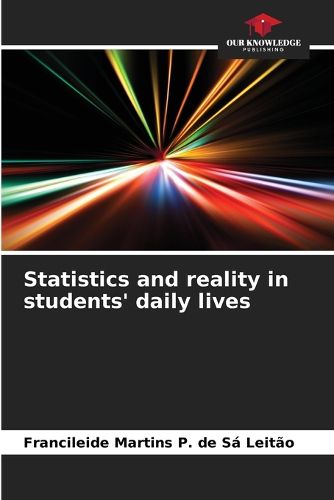Readings Newsletter
Become a Readings Member to make your shopping experience even easier.
Sign in or sign up for free!
You’re not far away from qualifying for FREE standard shipping within Australia
You’ve qualified for FREE standard shipping within Australia
The cart is loading…






This title is printed to order. This book may have been self-published. If so, we cannot guarantee the quality of the content. In the main most books will have gone through the editing process however some may not. We therefore suggest that you be aware of this before ordering this book. If in doubt check either the author or publisher’s details as we are unable to accept any returns unless they are faulty. Please contact us if you have any questions.
Statistics is a part of applied mathematics that studies methods for collecting, organising, analysing and interpreting data, since its study is aimed, among other things, at decision-making. So we have to experience it so that we can understand it better without skipping any steps. In this way we will better interpret and consequently improve the skills and competences that, although important, should not be measured only through a written test, but through the application of a concept constructed and experienced by the student in everyday life. Statistics therefore seeks situations in which problem-solving is meaningful for the student and mobilises their cognitive resources. According to the PCN's (2002), the teaching of mathematics can help students develop skills related to representation, comprehension and investigation, as well as socio-cultural contextualisation. This means placing students in a teaching-learning process that values mathematical (statistical) reasoning and also enables the teacher to work on content in an interdisciplinary way and broaden the understanding of its meanings, thus contributing to the formation of knowledge.
$9.00 standard shipping within Australia
FREE standard shipping within Australia for orders over $100.00
Express & International shipping calculated at checkout
This title is printed to order. This book may have been self-published. If so, we cannot guarantee the quality of the content. In the main most books will have gone through the editing process however some may not. We therefore suggest that you be aware of this before ordering this book. If in doubt check either the author or publisher’s details as we are unable to accept any returns unless they are faulty. Please contact us if you have any questions.
Statistics is a part of applied mathematics that studies methods for collecting, organising, analysing and interpreting data, since its study is aimed, among other things, at decision-making. So we have to experience it so that we can understand it better without skipping any steps. In this way we will better interpret and consequently improve the skills and competences that, although important, should not be measured only through a written test, but through the application of a concept constructed and experienced by the student in everyday life. Statistics therefore seeks situations in which problem-solving is meaningful for the student and mobilises their cognitive resources. According to the PCN's (2002), the teaching of mathematics can help students develop skills related to representation, comprehension and investigation, as well as socio-cultural contextualisation. This means placing students in a teaching-learning process that values mathematical (statistical) reasoning and also enables the teacher to work on content in an interdisciplinary way and broaden the understanding of its meanings, thus contributing to the formation of knowledge.